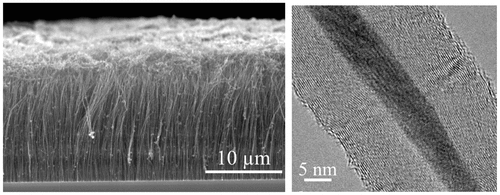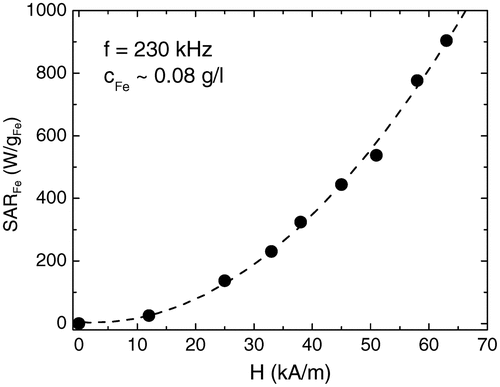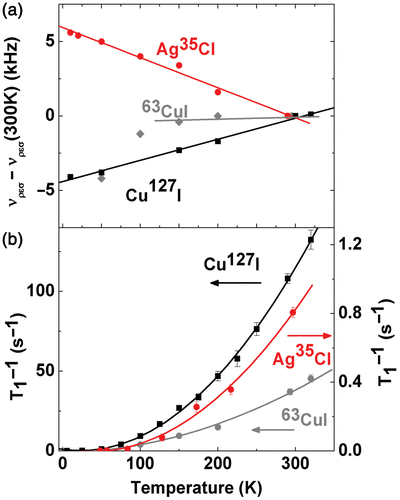Figures & data
Figure 1. Sketch of a filled carbon nanotube serving as multi-functional container for in vivo applications. A ferromagnet can induce heat in AC magnetic fields and a material with strongly temperature dependent nuclear magnetic resonance (NMR) signal might serve as a thermometer. Additional drug delivery can be envisaged. Exohedral functionalisation to achieve biocompatibility is sketched. Note that single-walled as well as multi-walled CNT can be realised.

Figure 2. Typical SEM and TEM images of well-aligned iron filled multi-walled carbon nanotubes synthesised by LS-CVD.

Figure 3. Specific absorption rate SARFe of Fe nanowires (∼0.08 g Fe/l) encapsulated in CNT. Measurements have been performed at f = 230 kHz after dispersing the CNT by means of human albumin in PBS (4.2 g/l).

Figure 4. Temperature dependencies of 127I, 35Cl and 63Cu nuclear magnetic resonance parameters measured on CuI- and AgCl-filled CNT. (a) Nuclear magnetic resonance frequency. (b) Nuclear spin-lattice relaxation rate. The symbols present the experimental data. Solid lines are the fit (see the text).

Table I. Temperature sensitivity parameters of several filled CNTs. The table shows the filling material, the respective nucleus as well as temperature dependence of resonance frequency and T1-relaxation time in the temperature range of 300°–320°K.